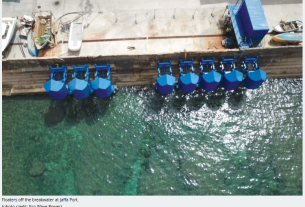Shortlisted for the Georgina Mace Prize 2022
In their latest Perspective, Lucy Dowdall and colleagues present a framework for successful recovery of nature in estuaries using the Natural Capital approach.
Estuaries are the transitional zones between freshwater rivers and saltwater seas. They are also some of the most complex and unique habitats on earth. They provide important habitats for a wide range of key species, such as migratory birds and waders and have significant importance to people; many estuaries are culturally important and almost all have significant economic importance to their local areas.
Estuaries have therefore been led to have disproportionate importance to people compared to their size. Their importance has led to a high utilisation of these areas resulting in poor ecological conditions, particularly in north-western Europe.
While attempts have been made to conserve estuaries, they have struggled to significantly improve their conditions, largely due to inappropriateness of the approaches within a dynamic and complex environment. The demands on estuaries are also unlikely to ease, with urbanisation centring around them in increasingly growing population and size, and matching industry to support this growing population.

In our study, we propose that a new approach is needed and suggest that the Natural Capital approach may be a solution.
The Natural Capital approach may be more suited for the long-term conservation of estuaries because it is better able to reflect the needs of people and the needs of nature in its assessments. It balance these elements holistically, ensuring that restoration of estuarine habitats can occur alongside the needs of people being met.
The approach takes into account the ecosystem services provided and demanded of the system, and can adapt to changes within this quickly, suiting a highly dynamic system. It also provides an avenue for much needed financial resources to flow into conservation actions, allowing long term funding to maintain the restoration and conservation of these important areas.
We also discuss the potential socio-economic benefits that could be gained in these areas through use of Natural Capital approaches, particularly in north-western Europe, such as increased sense of place, mental health benefits and physical health benefits.
As part of this work, we outline for how the Natural Capital approach can then be implemented effectively in estuarine systems, including all the necessary inputs from key stakeholders including funders and decision makers.

It includes the potential outputs and benefits that can be gained through this approach and how these may feed back into the approach, allowing for the continued restoration and conservation of these habitats.
We believe that estuaries in north-western Europe need restoration and conservation for the benefit of both people and nature, and propose that Natural Capital approaches are the best way of achieving this for the long term future. While there may be difficulties in applying the approach initially, further work can be done to fill knowledge gaps and make the approach as effective as possible to conserve important, complex and dynamic ecosystems.
Read the full Perspective: “The Natural Capital approach: A framework for the successful recovery of nature in estuaries” in Issue 3:3 of Ecological Solutions and Evidence.
Discover the other early career authors shortlisted for the Georgina Mace Prize 2022.


